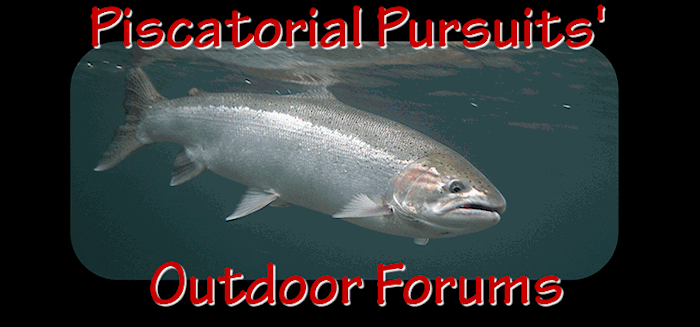Its all the septic systems and Pesticide/herbicide and fertilizer use. You will find polluted alluvial plains at the mouth of small creeks that are drainages for housing developments for miles up stream. All the run off from yards and septic systems collects and spews into the canal.
Here is something I have known for years from my wanderings as a youth in small streams of the NW.
Fewer mussels indicate ailing stream - Bear Creek activists studying cause of shellfish's decline
2004-02-10
by Chris Winters
Journal Reporter
When Wendy Walsh moved into her home on Bear Creek in 1962, she thought the bottom of the creek bed was covered with large black stones.
Several years later, she learned she was looking not at rocks but western pearlshell mussels. The shellfish covered the bottom of the creek, and her 60 acre parcel east of Woodinville was dotted with middens, the remnants of discarded mussel shells at old Indian campsites.
For a number of years, however, the numbers of mussels in the creek have been dropping. In 1990, runoff from Paradise Lake Estates construction caused the creek to silt up.
``It looked like coffee with cream,'' Walsh said. ``It wiped out 80 percent of the mussels, and the developer was never fined.''
Her neighbor, Juanita Verschuyl, has also noticed a drop in population.
Where previously ``they were just clustered together in huge areas,'' Verschuyl said, now only a couple dozen remain in the section of creek near her home. ``There's so much silt covering everything now.''
The mussels, or Margaritifera falcata, function as natural filters in the streams, pulling nutrients and contaminants out of the water. More than 600 species of mussels exist in the U.S. and Canada, making the region the most diverse in the world for the critters.
Mayflies and caddis flies, which spend part of their lives underwater, function the same way, but they only live about four years, said Jen Stone, a fisheries biologist with the U.S. Department of Fish and Wildlife in Lacey. The mussels can live up to 120 years, each year adding a ring to their shells.
They're a good record of history, Stone said. ``You can almost pinpoint it down to when an environmental disturbance occurs.''
Mussels also have a quasi-symbiotic relationship with fish, presumably with salmon. While it is unknown exactly which species western mussels attach themselves to, in the eastern U.S. the larval-stage mussels attach themselves to salmon gills for a year, then are dropped off later elsewhere in the stream, where they settle near the banks to grow.
The problem is that until very recently no one has really studied them to track long-term trends, and most federal resources have gone toward protecting salmon, Stone said.
``There are species of higher priority in the region,'' Stone said.
In an effort to better understand mussels, a number of scientists and academics -- including Stone, with Walsh in a communications capacity -- have formed the Pacific Northwest Native Freshwater Mussel Workgroup. Part of their efforts include educational outreach to university zoology departments in an attempt to add courses.
Their efforts are starting to pay off. At a scientific symposium at which 20 people were expected last year, 120 showed up. A second is scheduled for April 20 in Vancouver, Wash., where the day will be devoted to mussels.
Aquatic canaries in the coal mine
As an indicator species, mussels reveal the overall health of the stream, and the reduction in their numbers may be related to that of salmon and other fish.
``We call them the aquatic canaries in the coal mine,'' said Jayne Brim Box, a U.S. Fish & Wildlife biologist hired by the Confederated Tribes of Umatilla Indian Reservation in Pendleton, Ore., to study mussel populations in the Umatilla and John Day Rivers, which drain into the Columbia.
``We do recognize right now that they're the most endangered animal in the United States,'' Brim Box said. The Umatilla, which historically used to have mussel populations, is now nearly empty, compared to the John Day, which runs through protected national wilderness areas and has many populations.
Brim Box estimates that 70 percent of the species nationwide are imperiled, and she knows of four in the southeast -- where most of the species are located -- that are thought to be extinct. According to a study published in a 1995 National Biological Service report titled ``Our Living Resources,'' 85 percent of all mussel species in the U.S. are listed as special concern, threatened, endangered or endangered and presumed extinct.
Many species back east have been listed as endangered under the U.S. Endangered Species Act, but none of the western species is similarly protected.
``We just don't know their population status,'' Brim Box said.
Walsh tried for years to raise concern with local, state and federal officials but couldn't get any help.
``What I was told is they can't be protected until you demonstrate they exist,'' Walsh said. ``The problem is, no one had ever done a study.''
That's what she's doing now. Along with other activists, she formed Bear Creek Water Tenders and secured $25,000 in grant money from Washington Trout in Duvall to conduct a three-year study.
No juveniles to be found
In the study's first two years, the group focused on tallying the mussels in the creek and comparing first-year populations to second-year populations. The initial tally, finished last year, showed no short-term decrease in the remaining beds.
But there was one alarming conclusion: there were no baby mussels.
``There was no recruitment,'' said Water Tenders president Dick Schaetzel, using the technical term for how larval mussels join established beds. ``We couldn't find any.''
The smallest of the mussels were about an inch long, or about 15-20 years old.
That squared with the first study done on western mussels, a University of Washington graduate thesis written by Kelly Toy, who works as a shellfish biologist for the Jamestown S'Klallam Tribe in Sequim. She has tried to get mussels listed as a species of concern in Washington state and has studied mussels in Bear Creek and Battle Creek, on the Tulalip Reservation near Everett.
``On Bear Creek, just by looking at the age structure, you had a lot of mussels that were 70-80 years old,'' Toy said. She said that was ``a little worrisome'' when compared to the Battle Creek population, which had plenty of juveniles.
Walsh is hoping the third year of the study will shed light on Bear Creek. Mussels are being analyzed in King County labs to see what contaminants they may be exposed to. Testing of the stream has confirmed growing levels of ammonia, nitrates and phosphorous, Walsh said. The question is what its effect on the mussels.
While waiting for the results, Walsh continues her efforts to understand what's going on.
The Water Tenders have set up an infrared-triggered camera to try and capture predatory activity, but it hasn't revealed anything conclusive.
It is known that beaver dams also contribute to siltation and strangling mussel beds. While beavers, otters and raccoons eat the mussels, that hasn't been cause for concern until recently, when the mussel populations were already reduced. In addition, top-of-the-food-chain predators like bear and cougar have all but disappeared, allowing beaver to multiply.
Walsh has wrapped most of the trees along the banks of the creek in chicken wire to deter them. But in much of the creek that runs by her property, once-plentiful mussels are now scarce. Only one bed has a significant population, and most of the others have only a handful and can't be seen from the shore.
``The creek is in big trouble,'' she said.
Chris Winters can be reached at chris.winters@kingcountyjournal.com or at 425-453-4232.
MUSSELS STUDIED IN SYMPOSIUM
The Pacific Northwest Native Freshwater Mussel Workgroup is meeting April 20 in Vancouver, Wash. More information about the group is available online at
http://columbiariver.fws.gov/musselwg.htm. PHOTOS: by Maxwell Balmain/Journal: 1) Juanita Verschuyl looks over a section of Bear Creek near the Woodinvill-Duvall Road that contains freshwater mussels, which may be in danger of dying out. She and other homeowners near the creek are concerned about the health of the water. 2) Experts say fresh water mussels in Bear Creek are declining.

















 Previous Topic
Previous Topic Index
Index

